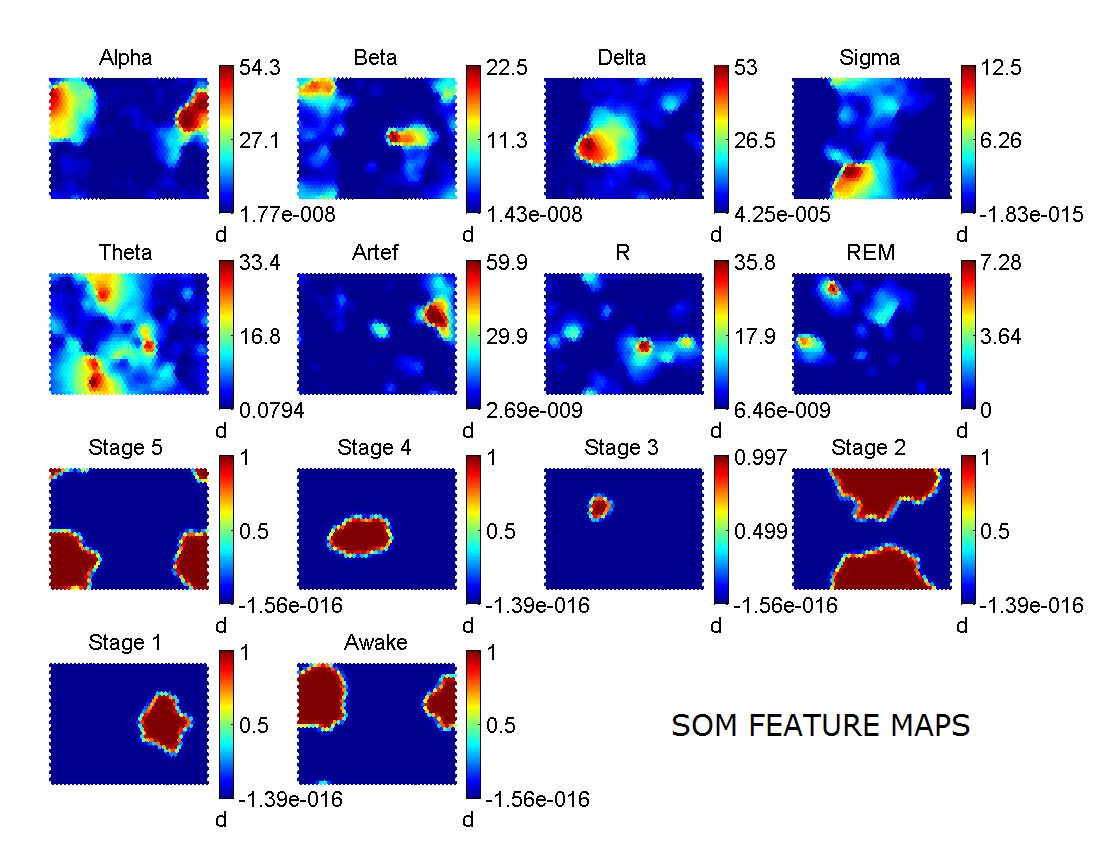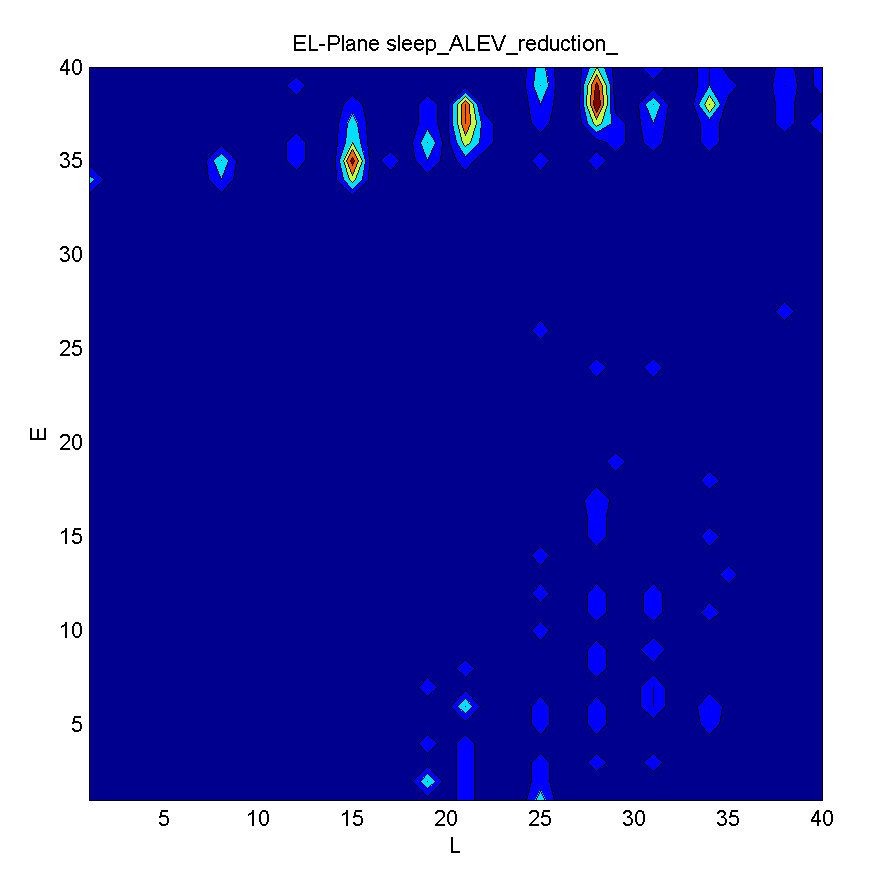Survey research about the state of the art of the Brain Computer Interface (BCI) technology, providers and classification methods used. Current successes, weaknesses and application areas. Studies about human brain anatomy, EEG in neurology, types of brain waves. Modeling of EEG-Samples for distinguishing different sleep states and the awake state using several neural network architectures.

For Visual Data Mining and training data optimization (pattern reduction) the Aspects of Lyapunov,
Entropy and Variance (ALEV) in conjunction with Self Oraganizing Maps method has been used.
The goal is to provide adequate tools to create a knowledge base, classifiers and predictors for different mental
cortical strategies related to the dynamics of body motion.
The state of the art in BCI technology has been investigated in the last 5 years. Two main approaches have been idetified: Invasive (Implantations)
and non-invasive technologies are in focus of international research, mostly in the USA, Europe, Australia and far East.
Goals are to create e.g. intelligent wheelchairs and cars for disabled people but also virtual reality applications and computer game support.
Medical applications for diagnosis are well known around the globe today, but artificial intelligence approaches for interpreting and
classifying, even for prediction of mental patterns are in increased focus of research. They are the key to a new generation of applications for rehabilitation and
increasing mobility of handicapped or old, weak human beings.
Promising non-invasice BCI technology which can be used and combined with other
technology forms have been identified. Typically wireless communication and easy to apply sensors
are latest progresses in the field.

